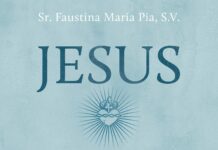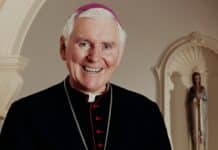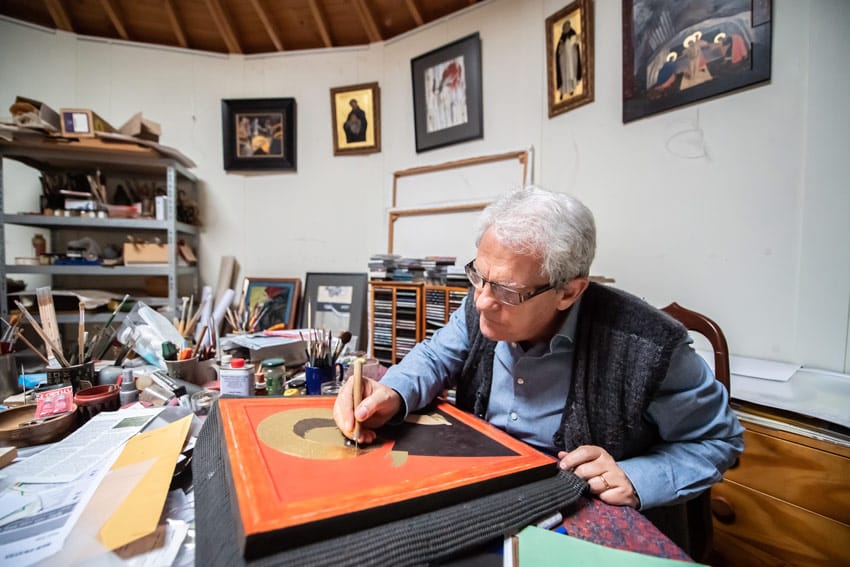
When Michael Galovic sits down to paint he enters a mystical world where the human meets the divine.
Scenes from the Gospels become present in brilliant colour and saints from the distant past stare out at the viewer, inviting the contemplation of heavenly things.
Shimmering halos of gold leaf enshrine stern faces, as the divine encroaches on the everyday. Colours and objects all have meaning and everything points to goodness, holiness and eternity.
As an iconographer who has been painting, or “writing,” icons for almost 50 years, Michael says that if done properly, the work of producing an icon can itself be a form of prayer.
For him it is no longer a matter of needing to make money, the 68 year-old says, but rather the experience of producing an icon. He has lost track of how many icons he has painted, however his works are in over 100 churches across Australia.
“I’m painting now for my own salvation … it’s my own process. I’m building my own little temple,” he says sitting amid the icons, paint brushes and jars of pigment in his studio in the backyard of his Central Coast home.
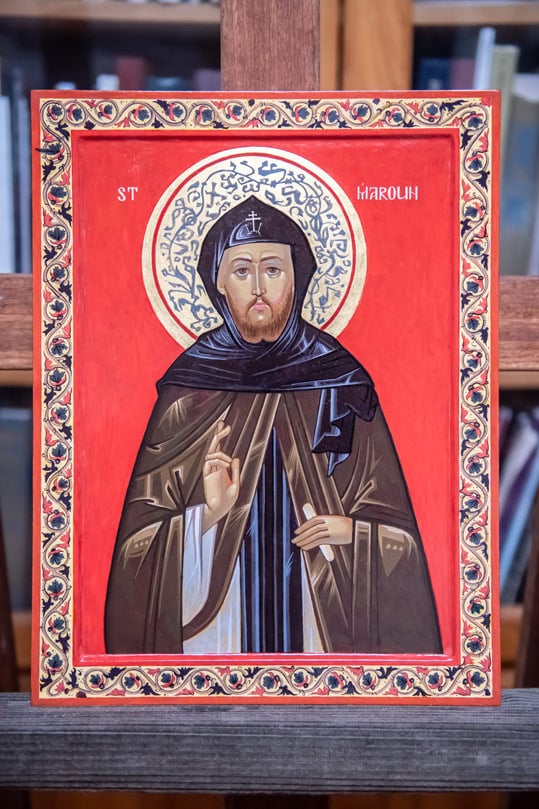
“I realise as I get older how precious my energy is, as I’m riding the last wave, so-to-speak. I have to use it to the best of my ability. I don’t waste my time. Luckily, this [painting] can be done into old age.”
Michael began painting icons at the age of 19 in Yugoslavia — now southern Serbia — where he learnt the basics from his step-father, who was a painter and restorer of frescoes and icons in churches and monasteries.
Despite the fact he was accepted into the Academy of Applied Arts in Belgrade, Michael decided a year before his graduation that he would give up art for good.
“I thought I was mediocre and didn’t see myself being able to reach the heights,” he says.
The thought of the suffering that would come with being a second-rate artist was too much, and for 15 years he didn’t produce any art, except the occasional icon.
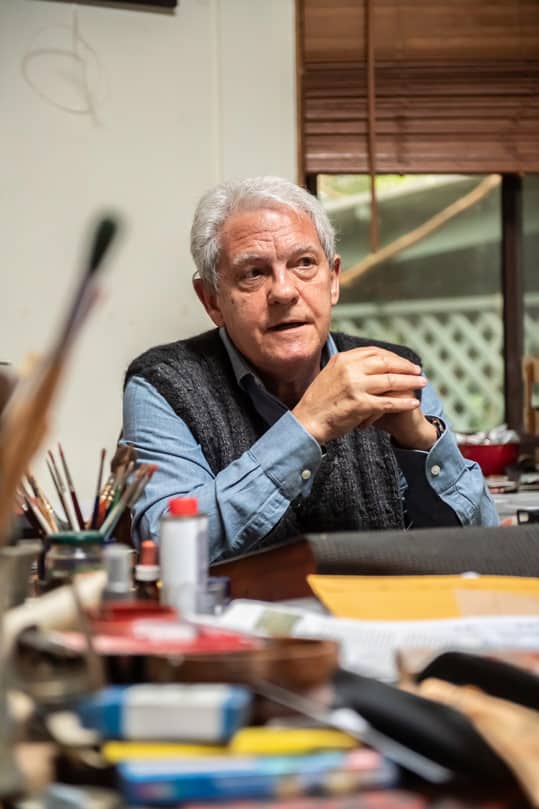
There were no schools dedicated to learning iconography in Yugoslavia and so he had no formal training from established iconographers.
Occasionally he would take one of his icons to older, more experienced iconographers for their feedback but usually received little assistance.
“I realised when I reached a certain standard that they actually did not want to volunteer information. They were afraid of competition. That’s probably normal, … human. They simply didn’t want you to develop more.”
It wasn’t until he migrated to Australia in 1990 that Michael took up iconography on a regular basis.
He writes his icons in the traditional way, preparing the board with rabbit skin glue and gesso, and painting with egg tempera and applying gold leaf.
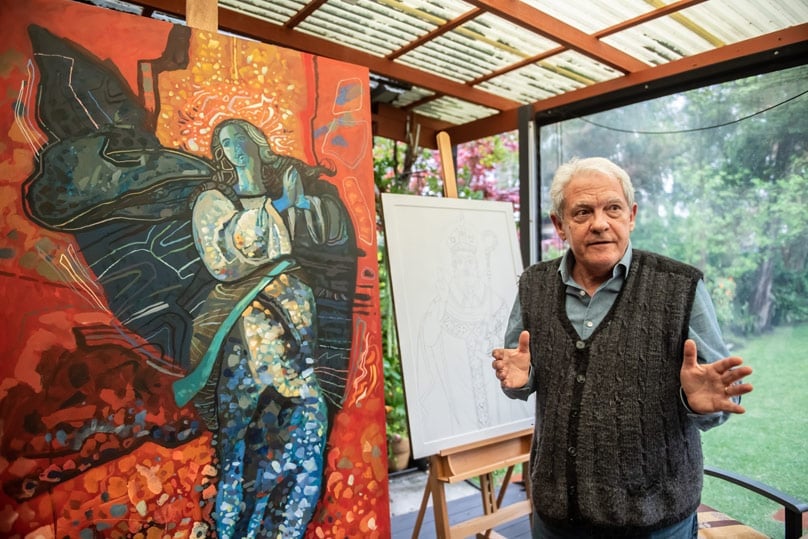
“I relish the fact I do everything on my own,” he says. “It is a rare satisfaction.”
Most iconography involves creating replicas of traditional icons. Not only is it the best way to learn, it is also a way of staying humble, according to Michael.
“The best art is so high that we can’t do it anymore. It’s like saying, ‘I’ve played the violin for two days, and now I want to play Paganini’. It’s doesn’t work. You can never master it, so you should always go back humbly to copy something to remind yourself how colossally far you are from perfection.”
He says about 95 per cent of iconographers are copying established, traditional icons, rather than designing their own.
“To do the copying properly and make it really good, is a big deal. There are schools [to learn copying] in Europe. It’s not an inferior thing at all.”
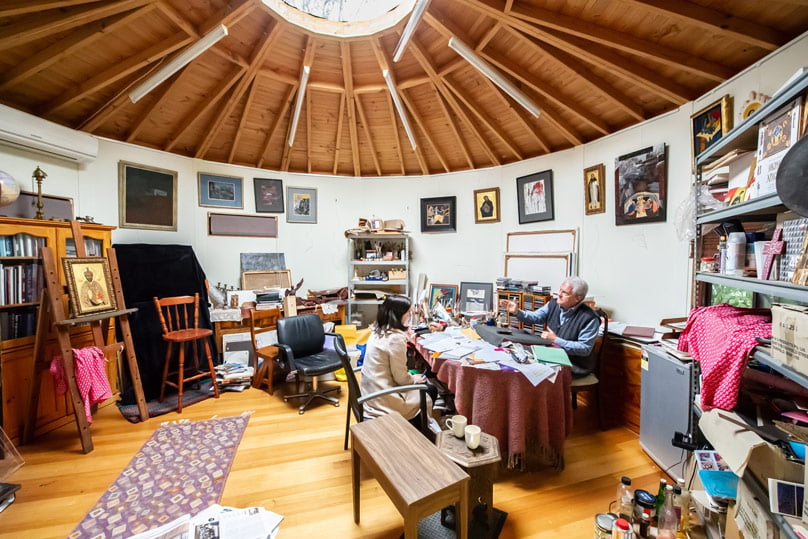
It is only in the past 20 years that Michael says he has started designing his own icons and he has also branched out into contemporary religious and non-religious art as well.
He is constantly inundated with commissions from all over Australia, with most cathedrals around the country containing a piece of his work.
He was the first iconographer in Australia to produce an icon of St Mary MacKillop and the first to create an icon of Mary, Help of Christians and Our Lady of the Southern Cross.
While traditional icons account for 80 per cent of his work, Michael has recently began replicating paintings from the Renaissance, a period which has always fascinated him, such as the works of Dominican painter, Fra Angelico.
Despite his great appreciation of such art, he says iconography, which emerged from the Middle East, is better able to depict the divine.
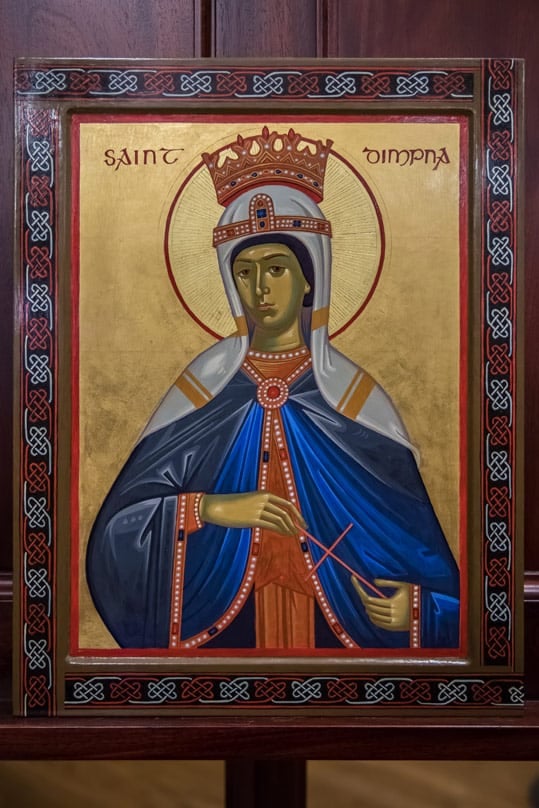
“Western art is focussed on the human nature of Christ. So when you see the crucifixion, you see how Christ suffered as a man on a cross. We see blood, it’s gory,” he said.
“But with icons, they try, from the very beginning, to depict that elusive mystical side of the story—the fusion of the two natures, but especially the divine nature of Christ, something that you cannot basically paint.”
Icons depict the divine by distorting the natural world, he says.
“Everything in icons is distorted, different from realistic painting … The first Surrealism basically happened with icons. They introduced the different laws of perspective, sacred geometry. They came up with something very much like analytical Cubism because it shows different focal points in the one painting.”
“In the same icon you have completely impossible things happening. They wanted to depict another world, definitely not like the one we are in at the moment.”
Icons in churches have a liturgical purpose, and are meant to remind the worshipper of the other world beyond the material one, he said.
Orthodox and Eastern Catholic churches express this notion by the iconostasis—the screen covered with icons, separating the main church from the sanctuary.
“When you stand in front of the icons in an Orthodox church, those icons with their oddity, deliberate distortions belonging to another realm, you are, basically, as a parishioner or worshipper, preparing yourself for that world which lies behind. They are like the last barrier there between you and that world.
Because the iconostasis is symbolically a barrier between this world and the heavenly one, where the sanctuary is, the icons are basically the guardians there.”
Michael believes iconography should never be undertaken only as a work of art, without a proper sense of the spirituality behind it.
“If it’s not about Christ for you, from the very beginning, then forget about it.”
More info: www.michaelgalovic.com

